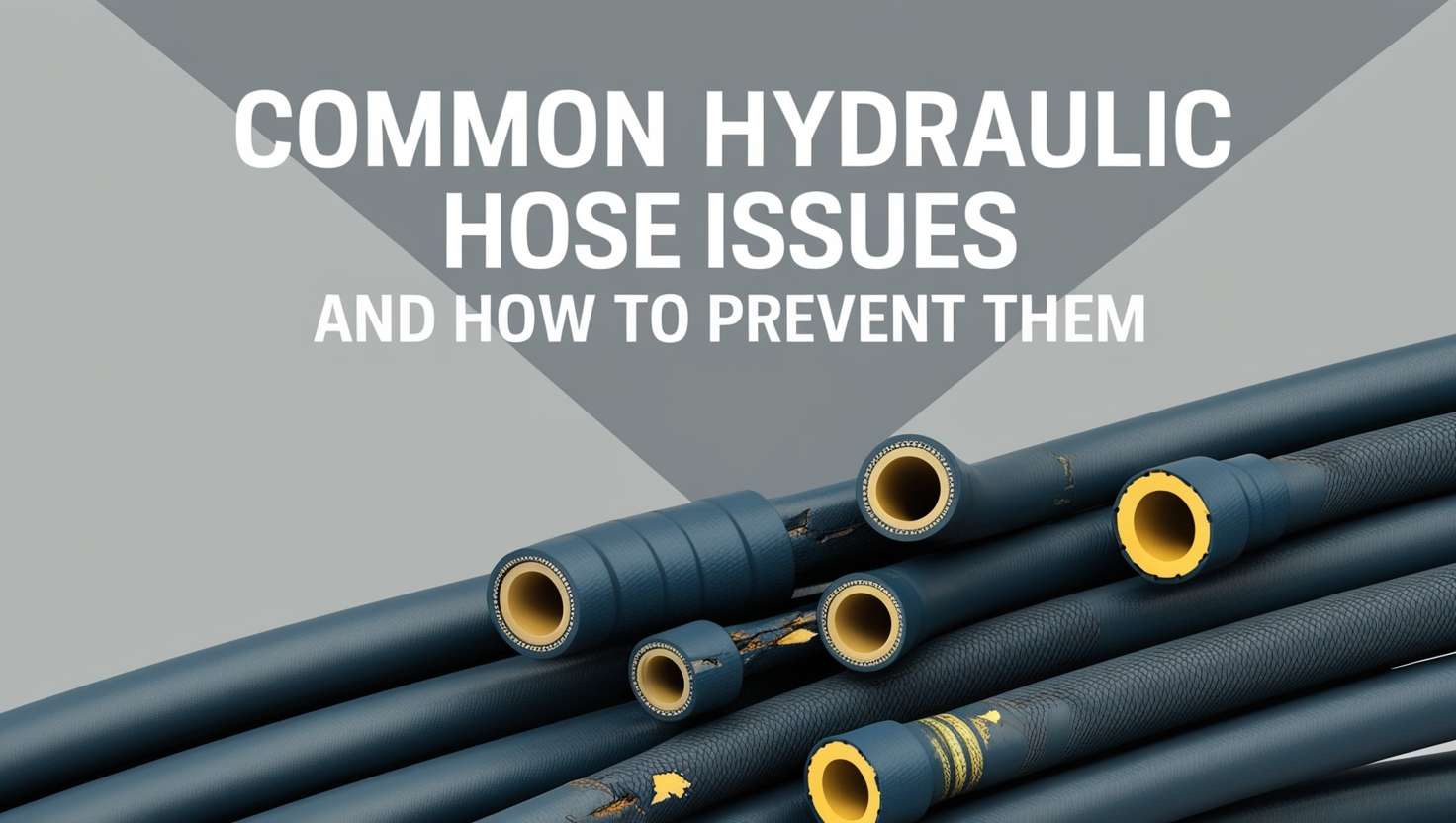

The essential role of hydraulic hoses is to operate within numerous machines and systems. They transport hydraulic fluid as pressure to different equipment sections, enabling heavy machines, industrial systems, and vehicles to operate efficiently.
Knowing typical hydraulic hose issues and prevention techniques helps reduce deterioration so equipment stays operational.
Before examining their problems, we need to understand hydraulic hoses. These hoses are not made in the usual way that outdoor hoses are. Their construction is unique, so they can handle high pressures and move hydraulic fluid, which let’s gear work at complex levels. Despite their excellent construction, the hoses can only last so long.
To keep your hydraulic system working well, it’s important to know the common hose problems—and how to stop them from happening. Regular hydraulic hose maintenance helps you catch issues early before they turn into expensive repairs. Let’s take a look at the most common problems and how taking care of your hoses can make them last longer.
If you rub two objects together with a piece of rope, it will repeatedly contact rough surfaces. The conditions found in various work environments lead to the breakdown of hydraulic hoses through this exact mechanism. The outer protective layer of the hose deteriorates gradually when it experiences continuous contact with machine components, metal structures, or rough surfaces.
Prevention Tips:
• Protective sleeves and guards must surround hose sections prone to damage.
• Periodically inspect all hose routes while removing every possible source of friction from the routes.
• Proper routing procedures should be used to prevent hose contact with dangerous edges.
• Hose covers with higher abrasion resistance should be used to protect areas that experience high wear.
Hydraulic hoses have a specified minimum bend radius, representing their most tightly curved position before internal damage occurs. Tight hose bending resembles the challenge of folding a straw without wrinkles because it leads to severe damage.
Prevention Tips:
• You should always stick to the bend radius guidance provided by the manufacturer.
• Proper fittings, along with correct routing methods, should be used.
• When creating plans for hose routes, designers should minimize bending areas beyond necessary measures.
• Replace any hoses that display signs of kinking together with indicators of over-bending.
Hydraulic hoses endure harsh operational environments because of severe elements. Hose Materials become damaged more quickly than predicted because of exposure to extreme temperatures, direct sunlight, chemical substances, and harsh climate conditions.
Prevention Tips:
• Select hoses that have been made for your operational conditions
• Apply protective coatings or shields
• All extra hoses need to be stored in controlled temperature zones.
• Perform periodic inspections to detect any damage weather conditions may have inflicted on hoses.
• Hose covers with UV resistance protection should be used for outdoor equipment.
Human mistakes frequently act as the main obstacle to safety. The problem with incorrect installation appears before the hose begins operation because it damages the material structure.
• Technician training must include accurate instructions for hose installation methods.
• The proper tools should be utilized to prevent damage during installation, following the manufacturer's guidelines.
• All fittings must be correctly aligned while being adequately connected.
• Hose installation should be performed without twisting or turning the pipe.
• Examine all connections twice before starting the equipment operation.
The operating conditions in hydraulic systems require high levels of pressure. A hose that fails to withstand system pressure resembles a water balloon seeking to explode.
Prevention Tips:
• Select hoses for your system only when they match the specified operating pressure requirements.
• Regularly check system pressure levels.
• The replacement of hoses should take place before they exceed their designated service period.
• Install pressure relief valves
• Check for indications of pressure-induced stress
Hydraulic hose maintenance should be treated similarly to medical checkups. Regular inspection routines can detect hazardous system failures.
Recommended Inspection Checklist:
• The inspection should detect visible signs, including cracks and bulges.
• Check for any fluid leaks
• Examine hose connections and fittings
• Verify proper hose routing
• When inspecting systems, examine the presence of environmental damage.
• Check for any unusual deformations.
Some hydraulic system damages remain invisible until proper inspection. The following indicators show when it is necessary to replace hydraulic hoses:
• Visible cracks or significant wear
• Leaking fluid
• Bulging or deformed sections
• The product lifespan limits set by most manufacturers indicate that replacement should occur after a specific number of years.
• Signs of inner tube deterioration
Let's discuss the numbers. The cost of proactive maintenance appears high but remains much lower than the cost of equipment downtime, emergency repairs, and potential safety incidents.
A small investment in:
• Regular inspections
• Quality hoses
• Proper installation
• Protective measures
Can save you thousands in:
• Unexpected equipment failures
• Emergency repairs
• Lost productivity
• Potential safety incidents
The smooth operation of numerous machines depends heavily on hydraulic hoses, which often appear as essential elements. Regular checks concerning the hoses will enable them to maintain your equipment's operational smoothness and efficiency.
The cost and safety benefits of preventing problems always exceed the expenses of repairing them. A short preventive inspection followed by maintenance procedures will protect you from spending many hours with equipment failures while costing thousands of dollars for repairs.
The essential role of hydrau...
READ FULLIn hydraulic transmission in industrial, automotive, and hydraulic uses, hydra...
READ FULLManufacturers produce diverse item ranges through rubber molding, including es...
READ FULL